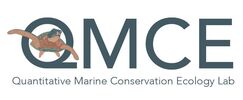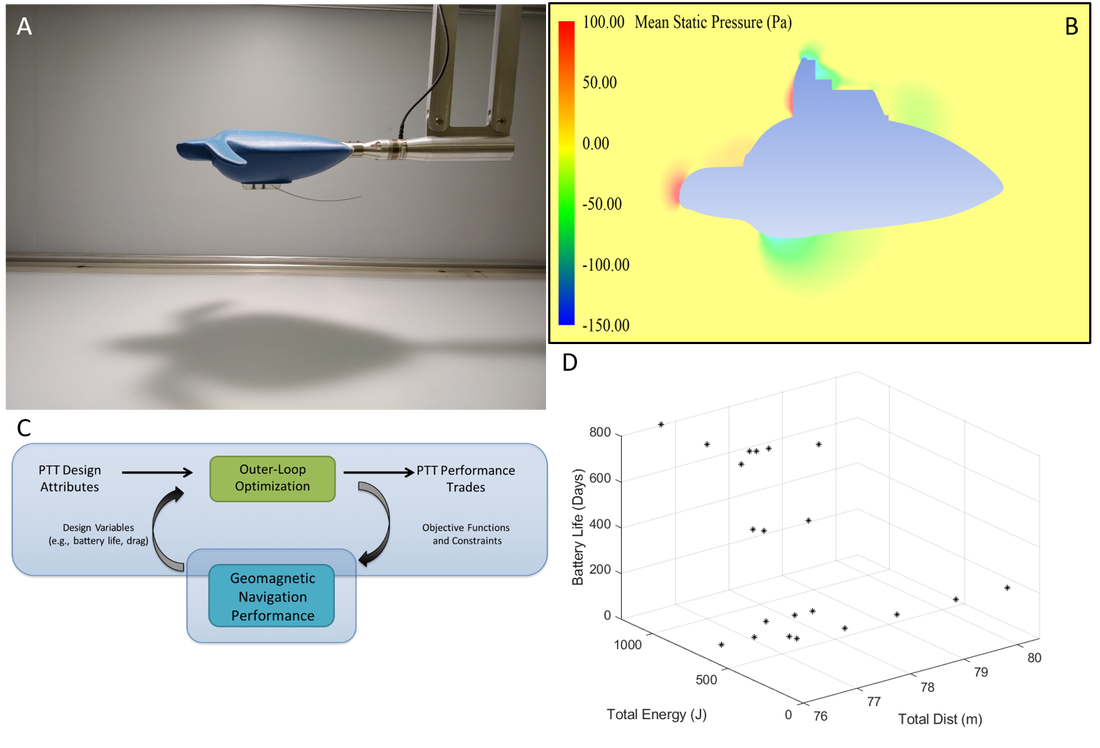Investigators: Susan Piacenza, Joseph Piacenza (OSU), John Faller (CSU Fullerton), Brian Taylor (UNC Chapel Hill), Salvador Mayoral (CSU Fullerton), Bethany Kelly, Delaney O'Connell (UNC Chapel Hill)
This is a collaborative research project involving undergraduate engineering and biology students and faculty. The project has two primary goals: (1) to identify deficiencies in state of the art of sea turtle satellite tags, and identify design improvement opportunities using formal methods of mechanical design engineering, while considering the biological needs and restraints of the organisms and (2) to educate undergraduate STEM students in collaborative and interdisciplinary research projects across the divide of biology and engineering. Biologists lack primary life history information, including movements and behavior, of juveniles of many sea turtle populations. Satellite tags are a key technology in aiding biologists to better understand sea turtle ecology, as sea turtles are pelagic and highly migratory. However, satellite tags were originally developed for terrestrial organisms and then subsequently adapted to marine animals, including sea turtles. As such, satellite tags have many deficiencies from a sea turtle biologist’s perspective, and are limited by size, weight, attachment method, battery life, antenna robustness, and the drag imposed may bias the animal’s behavior. We propose to design a satellite tag that takes all these factors into consideration, and provides a novel and pragmatic solution using engineering tools such as computational fluid dynamics, and methods for extending battery life such as energy harvesting, while limiting the cost to the researcher.
This is a collaborative research project involving undergraduate engineering and biology students and faculty. The project has two primary goals: (1) to identify deficiencies in state of the art of sea turtle satellite tags, and identify design improvement opportunities using formal methods of mechanical design engineering, while considering the biological needs and restraints of the organisms and (2) to educate undergraduate STEM students in collaborative and interdisciplinary research projects across the divide of biology and engineering. Biologists lack primary life history information, including movements and behavior, of juveniles of many sea turtle populations. Satellite tags are a key technology in aiding biologists to better understand sea turtle ecology, as sea turtles are pelagic and highly migratory. However, satellite tags were originally developed for terrestrial organisms and then subsequently adapted to marine animals, including sea turtles. As such, satellite tags have many deficiencies from a sea turtle biologist’s perspective, and are limited by size, weight, attachment method, battery life, antenna robustness, and the drag imposed may bias the animal’s behavior. We propose to design a satellite tag that takes all these factors into consideration, and provides a novel and pragmatic solution using engineering tools such as computational fluid dynamics, and methods for extending battery life such as energy harvesting, while limiting the cost to the researcher.

